32 Benefits Of Garlic For Health, Skin, & Hair + How To Use It
Take advantage of this delicious, aromatic herb as it helps boost your overall well-being.

Image: ShutterStock
Garlic, an aromatic herb regularly added in many cuisines worldwide, enhances the taste and can improve overall health. Garlic benefits you in multiple ways. Also, an age-old saying claims this herb can make vampires run away. Though it is a metaphor, it is recommended to eat garlic. The health benefits of eating raw garlic are many. It can combat many health ailments and is believed to have anti-cancer properties. These benefits are also backed up by research.

Be it chopped, halved, toasted, crushed, roasted, minced, or even whole, garlic can enhance the dish’s taste. Learn more about this herb and its benefits for skin, hair, and health. Scroll down.
 Know Your Ingredient: Garlic
Know Your Ingredient: GarlicWhat Is It?
Garlic is an herb belonging to the Allium family, contains numerous cloves, and has a strong, pungent, spicy smell.
What Are Its Benefits?
It enhances circulatory health, prevents cardiovascular diseases, reduces blood glucose levels, and strengthens the immune system. It also helps treat UTIs and yeast infections and improves skin health.
Who Can Use It?
Anyone can consume it except pregnant women or lactating mothers.
How Often?
One to two cloves per day.
Caution
Individuals allergic to garlic, having issues like stomach ulcer, IBS, or IBD, or recovering from a recent intestinal surgery should avoid taking it. Overconsumption may cause heartburn, excess body heat, and skin irritation.
In This Article
What is Garlic?

Garlic is a bulbous herb vegetable. Its scientific name is Allium sativum and is most commonly known as (lasun/lahsun) in Hindi, ‘Vellulli’ in Telugu, ‘Poondu’ in Tamil, ‘Veluthulli’ in Malayalam, ‘Bellulli’ in Kannada, ‘Rasoon’ in Bengali, ‘Lasan’ in Gujarati, ‘Lasun’ in Marathi and ‘Lassan’ in Punjabi. It is basically the edible bulb part of the lily plant and belongs to the Allium family (1).
| Kingdom | Plantae |
| Clade | Angiosperms |
| Clade | Monocots |
| Order | Asparagales |
| Family | Amaryllidaceae |
| Subfamily | Allioideae |
| Genus: | Allium |
| Species: | A. sativum |
Some of the other veggies that belong to Allium family are onion, leek, chives, shallots, and scallions. The average height and diameter of a garlic bulb is about 2 inches and contains numerous cloves, and both the cloves and bulb are enclosed in a paper-like sheath, which has white, off-white, purple or pink hue. The cloves of garlic are firm and are covered in a thicker paper-like sheath of the same color as the outer sheath. To use garlic, you need to detach the cloves from the bulb and peel them. Garlic tastes pungent and has a strong spicy smell. The pungent taste of garlic mellows down when cooked and adds a nutty flavor to the food.
There are different types of garlic such as softneck garlic, silverskin garlic, artichoke garlic, and hardneck garlic. Softneck garlic is the most common type of garlic that you see in the market and has a soft stalk, papery skin and creamy white in color. The outermost cloves of this garlic are larger in size as compared to those closer to the center. Silver garlic has a pink hue on its outer sheath and has a strong aroma. Artichoke garlic has a milder flavor and has larger but fewer cloves. Sometimes the artichoke garlic has a purple tint on its papery skin. However, it is the hardneck garlic that is known for its purple outer sheath. It has a hard, woody stalk and there are three types of hardneck garlic – rocambole garlic, porcelain garlic, and purple stripe garlic (2).
Garlic mostly requires lower temperatures to grow, but there are reports where garlic was found to have grown in warmer tropical regions. In fact, garlic grows best in temperate regions and doesn’t thrive in too hot or too cold regions. In India, Gujarat is the leading producer of garlic followed by Orissa, Andhra Pradesh, Uttar Pradesh, and Tamil Nadu. Garlic requires well drained loamy soil and is planted from August to November and is harvested within 4 to 5 months. The garlic bulbs are then dried to increase their shelf life.
Key Takeaways
- The water-soluble organosulfur compounds in garlic may reduce inflammation, signs of aging, and oxidative stress.
- Consuming garlic increases thermogenesis and reduces bad cholesterol to promote weight loss.
- The powerful antioxidant, anti-inflammatory and antimicrobial properties of garlic may help reduce acne.
- If you want to use garlic to get rid of all skin, hair, and health problems, consume it raw.
History Of Garlic
Garlic is one of the oldest crops. Garlic is mentioned in Indian and Egyptian cultures about 5000 years ago, in Babylonian culture about 4500 years ago, and in Chinese culture about 4000 years ago. The crop originated in Central Asia and is referred to as “center of origin” and a wide range of garlic varieties can be found here. In the early days, there were no specific types of garlic. In fact, after garlic was cultivated in southern Europe in the last 1000 years the softneck and hardneck garlic varieties started to get noticed. Garlic is believed to have become popular as humans migrated to various parts of the world. Today, each year about 10 million metric tons of garlic is produced worldwide, China being the leading producer of garlic with 66% garlic production (3),(4).
 Trivia
TriviaIs Garlic Good For You?
So, how good is garlic for you? Garlic is rich in compounds like Allicin, Sulphur, Zinc, and Calcium that have health benefits, beauty benefits as well as antibiotic and antifungal properties. It is also a rich source of a mineral known as selenium. Selenium is known to fight cancer and it works with vitamin E in the body to boost antioxidant power. Garlic also acts as a blood thinner due to its salicylate content. This enables proper blood flow and enhances circulatory health.
Nowadays, garlic’s reputation as a medicinal herb is significantly growing. This is because it has been confirmed by many researchers to be highly effective in preventing and treating a wide range of health conditions (5). In fact, for decades, garlic has been recommended by natural medicine practitioners all over the world to be included in the daily diet because of its many powerful effects on health. Now, before I tell you the various benefits of garlic, let’s take a look at the nutrition facts of the herb below.
Garlic Nutrition Facts
Garlic, a culinary staple revered for its pungent flavor and aroma, is a veritable powerhouse of nutrients. Packed with vitamins, minerals, and potent bioactive compounds, this humble herb offers a myriad of health benefits. It contains flavonoids, oligosaccharidesi A type of carbohydrate, which may also act as prebiotics and help boost digestive processes. , alliin and allicin and also high levels of sulfur. Let’s look at its nutritional value in detail (6).
| Energy | 149 Kcal | 7.5% |
| Carbohydrates | 33.06 g | 25% |
| Protein | 6.36 g | 11% |
| Total Fat | 0.5 g | 2% |
| Cholesterol | 0 mg | 0% |
| Dietary Fiber | 2.1 g | 5.5% |
| VITAMINS | ||
|---|---|---|
| Folates | 3 µg | 1% |
| Niacin | 0.700 mg | 4% |
| Pantothenic acid | 0.596 mg | 12% |
| Pyridoxine | 1.235 mg | 95% |
| Riboflavin | 0.110 mg | 8% |
| Thiamin | 0.200 mg | 17% |
| Vitamin A | 9 IU | 1% |
| Vitamin C | 31.2 mg | 52% |
| Vitamin E | 0.08 mg | 0.5% |
| Vitamin K | 1.7 µg | 1.5% |
| ELECTROLYTES | ||
| Sodium> | 153 mg> | 10%> |
| Potassium> | 401 mg> | 8.5% |
| MINERALS | ||
| Calcium | 181 mg | 18 % |
| Copper | 0.299 mg | 33% |
| Iron> | 1.70 mg | 21% |
| Magnesium | 25 mg | 6% |
| Manganese | 1.672 mg | 73% |
| Phosphorus | 153 mg | 22% |
| Selenium | 14.2 µg | 26% |
| Zinc> | 1.160 mg | 10.5% |
| PHYTO-NUTRIENTS | ||
| Carotene-ß | 5 µg | – |
| Crypto-xanthin-ß | 0 µg | – |
| Lutein-zeaxanthin | 16 µg | – |
This was about garlic nutritional benefits. Now, let’s find out how many ways garlic can be beneficial for your health, skin, and hair.
Health Benefits Of Garlic
Garlic health benefits are plentiful which include reversing heart disease, improving the health of diabetics and also preventing and fighting various forms of cancer. As garlic is consumed in small amounts, its bioactive components – sulfur and phytonutrients – have many health benefits. Here are some of the most profound garlic benefits that are supported by studies.
1. May Help In Stabilizing Blood Pressure

Mature garlic extract contains a bioactive sulfur compound, S-allylcysteine, which has been found to effectively lower blood pressure by 10 mmHg (systolic pressure) and 8 mmHg (diastolic pressure). Sulfur deficiency is one of the reasons for high blood pressure and therefore supplementing the body with organosulfur compounds can help stabilize blood pressure (7). Heat treatment tends to destroy allicin.
Garlic Dose To Lower Blood Pressure
Consume raw or dried garlic to be able to consume allicin in garlic.
2. May Help Lower LDL Cholesterol
American scientists found that aged garlic extract supplement can help lower LDL cholesterol by 10% in hypercholesterolemic male human participants. In rats, garlic inhibited the synthesis of cholesterol in liver cells. The researchers further experimented with water soluble and lipid soluble compounds of garlic and found that water soluble compounds in garlic inhibited cholesterol synthesis by 20-60% (8).
Garlic Dose To Lower Blood Pressure
You can eat 1-2 raw cloves of garlic per day to reduce LDL cholesterol.
3. May Reduce The Risk Of Cardiovascular Diseases

Scientists have evidence that garlic can help prevent almost all cardiovascular diseases. It helps to prevent cardiovascular diseases by lowering bad cholesterol, lipid, and serum triglyceride increase antioxidant activities, and decrease platelet aggregation. Garlic was also found to be effective against atherosclerosisi The hardening of arteries due to the build-up of fats, cholesterol, and other substances affecting blood flow. (9),(10).
Garlic Dose To Prevent Cardiovascular Diseases
Have a clove of raw garlic in the morning before your morning walk or morning run to keep cardiovascular diseases miles away.
4. May Improve Bone Health
Age and unhealthy lifestyle can make your bones weak, which means that fractures and osteoporosis will set in much earlier. Garlic has been found to be effective against osteoporosis and arthritis. In a study, scientists supplemented lab rats with garlic oil and found that garlic oil was able to suppress ovariectomyi The surgical removal of one or both ovaries, commonly performed for treating issues like ovarian cancer and cysts. -induced bone resorption (11). Another group of researchers concluded that the diallyl disulfide helps to suppress the matrix degrading enzymes and therefore prevents damage to the bones (12).
Garlic Dose To Improve Bone Health
Consume 2-3 raw garlic cloves per day to improve bone health.
5. Can Relieve Intestinal Ailments

An upset stomach or a broken digestive system can hamper your daily life. So, if you are suffering from intestinal problems, you might want to consume garlic. Garlic tends to differentiate between the good and bad gut bacteria in the intestine and has an anti-bacterial effect on harmful enterobacteria (13). Scientists have also found that garlic is effective against H. pylori infections (14).
Garlic Dose For Relieving Intestinal Infection
Consume 1 raw garlic before breakfast with a glass of room temperature or cold water.
6. May Regulate Blood Sugar
High blood sugar can make you prone to developing diabetes, blood pressure, obesity etc. If you are suffering from high blood sugar, you must include garlic in your diet. Scientists from Kuwait conducted an experiment with raw and boiled garlic and found that raw garlic significantly reduced blood glucose levels in lab animal models (15). Therefore, consume raw garlic instead of the cooked bulb to help lower the blood sugar levels.
Garlic Dose For Lowering Blood Sugar
Consume 3-4 cloves of raw garlic to lower your blood sugar levels.
7. Can Prevent Thromboembolism
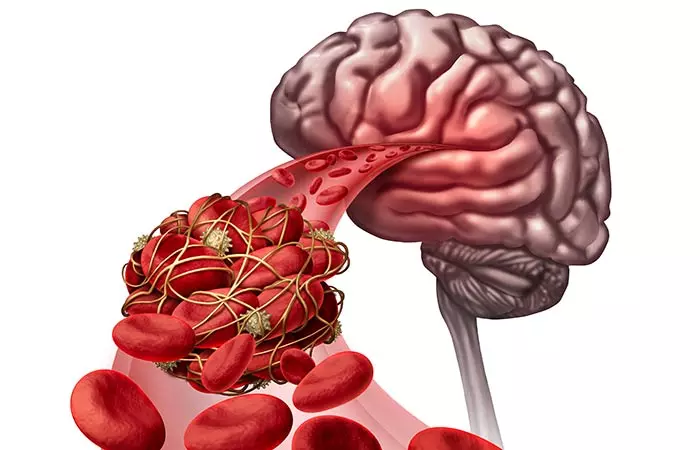
Clotting of blood to prevent excess blood loss is good but not when the blood clots detach and are carried by the bloodstream to other vital organs such as brain, lungs, kidney etc. Indian scientists experimented with garlic. The participants were asked to consume 10 mg raw garlic every day before breakfast for two months. The study concluded that garlic could be used to prevent thromboembolism (16).
Garlic Dose For Preventing Thromboembolism
Consume 3 garlic cloves before breakfast every alternate day.
8. May Reduce The Risk Of Cancer
Garlic contains diallylsulfide that helps inhibit oxidative stress, selenium present in garlic is known to have cancer-fighting properties, prevents DNA mutation and uncontrolled cell proliferation, and metastasisi A process involving the spread of cancer cells from their original site to different parts of the body.
(17). So, if you want to lower the risk of cancer, consume garlic along with leading a healthy lifestyle.
Garlic Dose For Fighting/Preventing Cancer
Consume at least 1 raw clove of garlic every day in the morning.
9. May Strengthen The Immune System

Garlic contains phytonutrients that are antioxidant in nature. Antioxidants flush out toxins and reduce oxidative stress in the body, which prevents you from falling sick or being prone to DNA mutations and disrupted cell functions. Researchers have also found that supplementing with garlic helped increase different types of immune cells in the body (18).
Garlic Dose For Boosting Immunity
Garlic is a natural immunity-boosting remedy. Consume 1-2 raw garlic cloves per day to strengthen immunity.
10. Can Relieve Oxidative Stress
As I mentioned earlier, garlic can help relieve oxidative stress. The water soluble organosulfur compounds found in garlic can help prevent DNA damage, reduce inflammation and atherosclerosis risk due to oxidative stress. In fact, garlic can also help prevent heart diseases by nullifying harmful free oxygen radicals (19),(20), (21).
Garlic Dose For Relieving Oxidative Stress
Consume 1 clove of raw garlic every day to flush out the harmful free oxygen radicals.
11. Helps Prevent Heavy Metal Poisoning

Heavy metals can kill you. And therefore it is best that you get rid of any traces of heavy metal from your body. A study conducted on lab rats showed that orally administering garlic helped reduce the levels of heavy metal (22). Another study confirmed that pickled garlic was more effective in lowering cadmium levels (23).
Garlic Dose For Lowering Heavy Metal
Consume pickled garlic to reduce or prevent heavy metal poisoning.
12. May Help Manage Diabetes
Diabetes is a metabolic disorder, mainly caused by unhealthy lifestyle. Scientists at IICT, India fed garlic to lab rats and found a reduction in blood glucose and triglyceride levels and also the rats showed increased insulin sensitivity (24). So, if you are prediabetici A state in which blood sugar levels are higher than normal but not high enough to be called diabetes mellitus. or a diabetic, consume garlic to lower glucose levels in the blood and make your body insulin sensitive.
Garlic Dose For Diabetes
Consume 2-3 cloves of raw garlic to prevent the risk or fight diabetes.
13. Helps In Reducing Yeast Infections

Yeast infections can be both embarrassing and distressing. Garlic is a natural remedy for yeast infections. Scientists have found that fresh garlic extract is highly effective against Candida infections (25). In another study, the researchers found that garlic was effective against candida vaginitis (26).
Garlic Dose For Diabetes
Consume 2-3 cloves of raw garlic every day. Do not apply raw garlic on the infected area.
14. Helps In Treating UTI And Kidney Infections
Cranberry is the go-to fruit for treating or preventing UTI, but garlic is no less. Scientists have found that garlic can help treat or prevent the growth of P. aeruginosa, a pathogen that colonizes the urinary tract walls and is responsible for recurring UTIs and kidney infections (27). Garlic is also effective against E.coli growth in the urinary tract (28).
Garlic Dose For Preventing UTI And Kidney Infection
Consume 3-4 cloves of garlic to prevent and fight UTI and kidney infections.
15. Can Help In Treating Asthma And Common Cold

Leveraging garlic oil benefits to treat common cold and asthma is an age-old folk practice. A special mustard garlic oil is massaged near the nose and on throat and lungs area to help treat chest congestion. Now, scientists also have found evidence that garlic can delay the hypersensitivity associated with asthma and also help treat common cold (29),(30).
Garlic Dose For Treating Asthma And Common Cold
Heat mustard oil with garlic and massage your body with this oil for treating cold. You can also consume 2-3 cloves of raw garlic to treat cold and asthma. Make sure you talk to your doctor first.
16. May Relieve Cold Sores
Cold sores or blisters are caused by herpes simplex virus. These are generally painful blisters that erupt in and around lips, chin, and nose. The worst news – this is contagious. Garlic contains antiviral antioxidant, anti-inflammatory, and antimicrobial properties and therefore may help treat these blisters. However, there is no solid scientific evidence to back this belief.
Garlic Dose For Treating Cold Sores
Consume 1-2 cloves of raw garlic to treat cold sores.
17. May Reduce The Risk Of Alzheimer’s Disease And Dementia

Garlic is said to protect from neurodegenerative disease, dementia. Alzheimer’s is a type of dementia and garlic is also effective against Alzheimer’s disease. A bioactive compound S-allyl-cysteine, found in garlic is neuroprotective in nature. Moreover, the antioxidant and anti-inflammatory properties of garlic also help prevent neurological deterioration (31),(32).
Garlic Dose For Preventing Alzheimer’s and Dementia
Consume 3-4 garlic cloves per day to help prevent the risk of dementia and Alzheimer’s disease.
18. May Aid Weight Loss
If you want to lose weight, you must consume garlic. Because garlic actually gets to the root of the weight gain problem. It helps to inhibit the expression of adipogenic tissues, increases thermogenesis, and reduces bad cholesterol (33) (34).
Garlic Dose For Weight Loss
Consume 3-4 raw garlic cloves for weight loss.
19. May Improve Eye Health

It is impossible to believe, but garlic has also been found to help improve eye health. Scientists have found that garlic reduces intraocular pressurei The fluid pressure of the eye essential for maintaining its shape. A rise in its level is a risk factor for glaucoma and eye issues. (35). The antimicrobial property of garlic is also effective against the microbes causing eyesight threatening keratitisi The inflammation of the cornea or white part of the eye, caused by infection, injury, or wearing contact lenses for long. (36). Scientists have also found that garlic juice can help prevent lead-induced apoptosisi A biological process where the cells destroy themselves when stimulated by an external or internal trigger. of the retinal cells in rats (37).
Garlic Dose For Eye Health
Consume 3-4 cloves of raw garlic after breakfast to protect your eyes.
20. Helps Reduce Ear Infections
Garlic has anti-inflammatory and antimicrobial properties and therefore may be effective against ear infections. However, there is no scientific evidence to establish this yet.
Garlic Dose For Reducing Ear Infection
Consume 2-3 cloves of raw garlic to reduce inflammation and microbial infection. However, consult your doctor before you start taking garlic to reduce ear infection.
21. Kills Oral Pathogens

Allicin present in garlic has antimicrobial properties and helps kill oral pathogens that are associated with dental caries and periodontitisi A severe gum infection that leads to tooth loss and may affect the surrounding bones and cause other health complications. (38). Scientists have also experimented with garlic extract as mouthwash and have found it to be an effective one (39). In fact, using toothpaste or mouthwashes containing garlic extract can help prevent dental caries (40).
Garlic Dose For Oral Health
Chew one raw garlic clove every day if you are suffering from a toothache or dental caries.
22. Improves Iron And Zinc Absorption
Both iron and zinc are important for proper functioning of various biological processes. Garlic contains sulfur that positively influences the bioavailability of both iron and zinc (41). Therefore, if you are iron or zinc deficient, you must include garlic in your diet.
Garlic Dose For Improved Iron And Zinc Absorption
Consume 1-2 raw garlic cloves to increase iron and zinc absorption and bioavailability.
23. May Ameliorate Fatty Liver
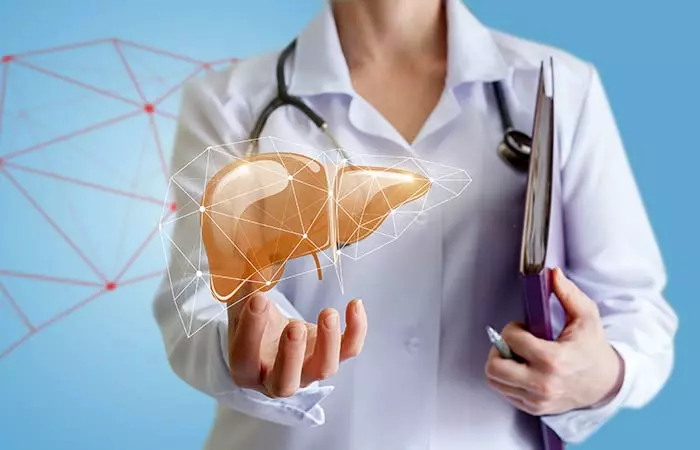
An excessive amount of fat deposition in the liver can be fatal. Garlic had been found to be effective against non-alcoholic fatty liver. Sulphur containing amino acid cysteine in garlic helps to have a better detoxification effect and generates potent antioxidant glutathione. Scientists found that S-allylmercaptocysteine (SAMC) helped ameliorate hepatic injury and garlic oil’s antioxidative properties also helped protect against non-alcoholic fatty liver (42),(43).
Garlic Dose For Ameliorating Fatty Liver
Add raw chopped 1-2 garlic cloves to spinach smoothie to help prevent fatty liver.
24. May Help You Live Longer
It is clear from all the above garlic benefits that consuming garlic can help improve your health by protecting your vital organs and cell functions. This way, garlic can help increase longevity (44).
Garlic Dose For Long Life
Consume 2 garlic cloves per day for a long and healthy life.
25. Benefits Of Garlic For Men
Garlic offers unique benefits for men’s well-being, including sexual health. Animal studies have shown that it may combat erectile dysfunction by promoting the production of nitric oxide synthase that plays a crucial role in erection duration (45). Consuming four fresh garlic cloves daily may not only lower cholesterol levels but also enhance blood circulation, benefiting sexual health. Its compounds, such as creatinine and allicin, found in vitamin B1, play a role in muscle activity, reducing fatigue and enhancing physical strength. Although more research is required, garlic may be a simple, effective way for men to support their overall vitality and sexual wellness.
Benefits Of Garlic For Skin
The garlic benefits for skin are explained in greater detail below. Know how to apply garlic on your face and skin for good results.
26. May Reduce Acne

You can also use garlic for acne. Garlic is a powerful antioxidant and has anti-inflammatory and antimicrobial properties. Since acne is caused due to over accumulation of toxins, clogged pores, and bacterial infections – garlic can be used to reduce acne (46).
How To Use Garlic For Reducing Acne
You can eat 1 clove of raw garlic followed by a glass of cold water. Also, make sure you keep yourself hydrated and clean your skin every 3 hours.
27. Soothes Psoriasis
Psoriasis is an autoimmune skin disease
, and the symptoms are red, scaly, and itchy skin that affect the scalp, elbows, and knees. It is not curable but consuming garlic can help reduce the disease symptoms. Psoriasis is caused due to inflammation, and since garlic is a strong anti-inflammatory agent, many recommend the use of garlic to reduce psoriasis. However, there is no direct scientific evidence to prove this.
How To Use Garlic For Reducing Psoriasis
Consume 3 cloves of raw garlic with leek, broccoli, and beetroot juice.
28. May Delay Aging

Skin aging occurs due to stress, unhealthy habits, stress, inflammation, genes etc. S-allyl cysteine, found in garlic helps protect the skin from UV damage and wrinkling. The antioxidants and anti-inflammatory compounds present in garlic help scavenge the oxygen radicals thereby reducing stress. Moreover, scientists have also found that garlic induces synthesis of normal human skin cells in the lab (47),(48).
How To Use Garlic For Delaying Wrinkles
Consume one clove of raw garlic with honey and lemon the first thing in the morning. You can also add raw chopped garlic to Triphala water and drink it in the morning.
29. May Fade Stretch Marks
The moment you hear about stretch marks, all you wish is for them to vanish! Well, they are stubborn, and our skin is elastic. To reduce stretch marks can take a long time if you don’t put in extra effort to get rid of them. Hot oil massage with garlic may help reduce stretch marks, and you must try it with olive oil or mustard oil.
How To Use Garlic To Remove Stretch Marks
Heat mustard oil and add 2-3 cloves of garlic. When you start to smell the garlic, remove from flame and let it cool down a bit. You can use it when it’s still warm. Massage in circular motion.
30. May Soothe Eczema

Dry, itchy, flaky, rough, and inflamed skin is known as eczema. It is caused due to inflammation triggered by an allergic reaction. Garlic has anti-inflammatory properties and thus believed to be effective against eczema. But there is no solid scientific backing this theory. So, talk to your doctor before consuming garlic to reduce symptoms of eczema.
How To Use Garlic To Remove Stretch Marks
Consume 1-2 raw garlic cloves with room temperature water.
31. Can Treat Athlete’s Foot
Athlete’s foot is caused due to a fungal or yeast infection, also known as tinea pedis (ringworm of the foot). Garlic is an antifungal agent and can be used to treat ringworm of the foot.
How To Use Garlic To Treat Athlete’s Foot
Consume 2 garlic cloves with leek juice in the morning.
Benefits Of Garlic For Hair
Ever thought of what are the uses of garlic for hair. But hey, even consuming raw garlic can have benefits for your hair – they can improve hair health and appearance.
32. May Prevent Hair Loss

Hair loss is a serious problem these days. Pollution, impure water, bad eating habits, stress etc. all add up to rapid hair loss. Using garlic for hair growth may prove beneficial. Scientists have found that garlic gel, along with betamethasone valerate can help prevent hair loss (49).
How To Use Garlic To Prevent Hair Loss
Consume 1 raw garlic clove with a spinach smoothie. Also, add lots of garlic in cooked fish to prevent hair loss.
So, those were the 31 garlic benefits for health, hair, and skin. Now, let me tell you how you can incorporate garlic into your daily diet.
How To Incorporate Garlic Into Your Diet?
- You can consume a clove of raw garlic to treat all your health problems.
- Add garlic to your food – pasta, bread, curries, casserole, salads, soups, dal, stews etc.
Best Ways to Use Garlic
The best way to use garlic to get rid of all health, skin, and hair problems is to eat it raw. Cooking it – boiling, frying, roasting etc. destroys it healing properties. So, start by taking a small piece of raw garlic and gulping it down with a glass of water in the morning. Then start consuming half a garlic and finally, chew a whole clove of raw garlic and wash it down with water. But you can also use it in other cooked food recipes. Here are a few garlic recipes for you.
Garlic Recipes
If you want to reap the healing power of this wonder herb, try adding it to some of your favorite recipes. Here are a few delicious recipes using garlic to try so you can enjoy all of their health-promoting benefits of garlic everyday.
Note: Heating garlic cloves whole or immediately after crushing can destroy the sensitive enzyme (alliinase) in garlic that is responsible for producing allicin.
However, the health benefits can be partially conserved by crushing garlic and allowing it to stand for 10 minutes prior to cooking. That gives the enzyme time to be released and for allicin to form. Once formed, allicin is relatively heat stable.
1. Garlic Baked Chicken

Ingredients
- 2 skinless chicken breasts
- 2 tablespoons olive oil
- ½ cup grated parmesan cheese
- 2 minced clove of garlic
- ¼ teaspoon freshly ground black pepper
- ½ cup breadcrumbs
- 1 teaspoon dried basil
- Salt to taste
How To Prepare
- Preheat the oven to 350 degrees F and lightly grease the baking tray.
- In a bowl mix olive oil and minced garlic.
- In another bowl mix breadcrumbs, cheese, dried basil, and black pepper.
- Dip the chicken in oil and garlic mixture and then coat it with the breadcrumb.
- Place the chicken breasts on the baking tray and bake for 30 minutes.
2. Roasted Garlic Sweet Potato Soup

Ingredients
- 1 whole garlic bulb
- 4 large sweet potatoes, peeled and cut
- 3 teaspoons olive oil
- 2 large onions, cut into wedges
- 2 tablespoons chopped parsley
- 1 tablespoon dried thyme
- 5 cups low-sodium chicken broth
- ¼ teaspoon black pepper
- Salt to taste
- Cooking spray
How To Prepare
- Spray the baking tray with cooking oil and toss in the sweet potato and onion.
- Remove the thin papery skin of the garlic bulb and chop off the top and wrap it in a foil.
- Toss it into the baking tray and bake the veggies for 30 minutes at 350 degrees F.
- Let it cool for 15 minutes and take out the garlic bulb.
- Now, gently squeeze out the soft garlic cloves into a blender.
- Add dried thyme, chicken broth, black pepper, olive oil, and parsley to the blender and blend until it becomes smooth.
- Transfer this into a saucepan and add the baked onions and sweet potatoes.
- Use a hand blender to blend the onions and sweet potato.
- Stir and cook for 5 minutes more.
3. Garlic Basil Pesto

Ingredients
- 2 cloves of garlic
- 2 cups fresh basil leaves
- ¼ cup pine nuts
- ½ cup grated pecorino cheese
- ⅔ cup extra virgin olive oil
- ¼ teaspoon black pepper
- Salt to taste
How To Prepare
- Process basil, pine nuts, and garlic until they are finely chopped.
- Add a pinch of salt and pepper to season it.
- Now, add the olive oil and pulse again until it becomes smooth.
- Transfer it into a bowl and mix with grated cheese.
Yummy, aren’t they? So, go ahead and prepare the best food with garlic and enjoy good health as well. But the next big question is how to select and store garlic? Read on to find out.
How To Select And Store Garlic?
To choose the best garlic, always hold the garlic in your hand to feel if it is damp and soft. Reject it immediately. Select the ones that are plump, firm, and light. If you like garlic and use it on a regular basis, choose garlic that has larger clove as peeling so many cloves can be very tiring. A trick to peel garlic quickly is to dry it in the sun for a day and then transferring it into a steel bowl, cover it with a plate and shake it vigorously. This will magically peel off all the garlic in just a minute.
To store garlic, keep it at room temperature or sun dry it before storing it at room temperature. Store garlic in places where there is good air circulation, dry and dark. You can also store garlic in a zip lock bag. Finally, you can store peeled garlic in oil or vinegar. So, where can you buy garlic?
Where To Buy Garlic?
The best place to find fresh and unadulterated garlic is the local farmer’s market. You can also buy garlic in supermarkets and online stores too.
 Quick Tip
Quick TipIt is clear that garlic has many benefits but can it cause any harm if taken in excess quantities or when people with certain conditions take it? Let’s find out in the next section.
Potential Raw Garlic Side Effects
Garlic benefits and uses are well known. But, the side effects of eating raw garlic can’t be overlooked. Check out what are they.
Bad Odor
Consuming raw garlic can make you stink as it has a strong and pungent odor.
Nausea, Heartburn, Vomiting
Consuming too many raw garlic cloves can make you feel dizzy, cause heartburn, and in some cases make you vomit.
Gastritis Issues
Too much garlic can irritate the stomach lining, disturb digestion, and cause gastritis issues.
Body Heating
Consuming too many garlic cloves can lead to heating up of your body, which can cause too much sweating.
Triggers Migraine
Garlic can trigger a migraine. So, if you suffer from a migraine, avoid consuming excessive raw garlic.
Effects Eyesight
If you consume garlic in excess, it can affect your eyesight. Hyphema or bleeding inside the eye is found in those who consume too much garlic.
Low Blood Pressure
Yes, garlic helps prevent hypertension but when you consume it in excess, it can cause low blood pressure.
Skin Irritation
Too much garlic can cause allergic reactions leading to skin rashes, reddening of the skin, and flaky and itchy skin.
Aggravates Vaginal Infection
Garlic in mild doses can help prevent vaginal infections but in larger doses can aggravate the vaginal infection.
Liver Damage
Excess garlic can be toxic and to remove the toxins the liver has to work extra. This may finally damage your liver.
Don, a blogger, shared his experience of a severe adverse reaction to garlic after consuming it at a restaurant. He wrote, “My stomach feels like it was suckered punched for days. I’ve felt weak because of it (i).”
Who Should Avoid Garlic
-
- Pregnant women.
- If you are allergic to garlic.
- If you are suffering from a stomach ulcer, IBS, IBD or just underwent intestinal surgery.
- If your doctor doesn’t allow you to take garlic.
Infographic: Interesting Facts About Garlic
Garlic is a popular and widely used flavoring agent in cooking and a traditional remedy. From regulating blood pressure to preventing hair loss, garlic has many health benefits. Check out the infographic below to learn some more interesting facts about garlic.
Some thing wrong with infographic shortcode. please verify shortcode syntax
Garlic is added to many dishes in different cuisines for its aroma. Research states that garlic can manage blood pressure, lower LDL cholesterol, and reduce the risk of cancer, yeast infections, Alzheimer’s, and ear infections. It can also delay aging signs, manage acne, psoriasis, and eczema, and fade stretch marks.
However, overdosing on garlic may cause heartburn, excess body heat, and skin irritation. Hence, moderation is advised. If you want to take garlic for any specific health condition, it is advised to consult your doctor beforehand.
Frequently Asked Questions
Is there any benefit to removing the core of a garlic clove?
No, you must eat the whole clove of garlic.
How to reduce garlic odor?
Chew parsley or mint right after consuming raw garlic to get rid of garlic’s pungent odor.
What is the best time to eat raw garlic?
Eat it in the morning after drinking your detox drink.
Does eating garlic prevent flea bites?
Garlic can help repel the mosquitoes and so, you may consume it to prevent getting bitten by fleas.
How many cloves of garlic should a person eat per day?
You can consume 1-4 raw garlic cloves per day.
Can you eat garlic skin?
No. Unless you want to feel how it feels like to be a grass-eating animal! You get enough antioxidants from the clove, why would you want to eat the tasteless and papery skin?
What are the benefits of eating raw garlic in morning?
Eating raw garlic in the morning can help reduce the risk of diabetes, cancer, obesity, premature aging, hypertension, high blood glucose levels hair fall, and can help you avoid skin problems.
Is it good to eat garlic and honey in the morning?
Garlic and honey are both rich in antioxidants and have antimicrobial properties. So, consuming them in moderation will help you ward off various bacterial, fungal, and viral infections, help prevent throat infections, aid weight loss etc.
Is garlic a herb or a spice?
Garlic is a herb vegetable.
Is it okay to have milk with garlic?
Yes, you can have milk with garlic.
Is it safe to use garlic mask for acne?
No. Do not use garlic directly on your acne as it may irritate your skin and aggravate the acne.
Does garlic help in skin whitening?
Garlic helps to flush out the toxins and helps to make your skin acne-free and also helps to reduce marks.
Garlic for facial hair – rubbing garlic on face hair growth.
Garlic will not help remove facial hair.
What are the uses of garlic paste on skin?
Consuming garlic paste will help to scavenge the harmful oxygen radicals and treat all your skin problems. However, we do not recommend you to apply garlic paste on skin without consulting a skin specialist.
Any benefits of black garlic supplements?
You can take black garlic supplements to boost your immunity, improve skin, hair, and memory.
What are the benefits of garlic soap?
Garlic sopa will help prevent any skin infections and also protects against acne.
How many Calories in Roasted Garlic Bulb?
One clove is 4 g, total calories is 4 calories. Garlic bulb of 40 g gives 40 cal.
Illustration: Benefits Of Garlic For Health, Skin, & Hair + How To Use It

Image: Stable Diffusion/StyleCraze Design Team
References
Articles on StyleCraze are backed by verified information from peer-reviewed and academic research papers, reputed organizations, research institutions, and medical associations to ensure accuracy and relevance. Read our editorial policy to learn more.
- Garlic. National Center for Complementary and Integrative Health. US Department of Health and Human Services. National Institutes of Health.
https://www.nccih.nih.gov/health/garlic - Garlic Variety Demonstration Trial – 2 Year Report- 2012-2014
https://dnr.alaska.gov/ag/akpmc/pdf/2015GarlicTrial.pdf - The origins and distribution of garlic: How many garlics are there? Agricultural Research Service, USDA.
https://www.ars.usda.gov/midwest-area/madison-wi/vegetable-crops-research/docs/simon-garlic-origins/ - Garlic Post-Harvest Operations, Food and Agriculture Organization of the United Nations.
http://www.fao.org/3/a-av002e.pdf - Garlic: a review of potential therapeutic effects, Avicenna journal of phytomedicine, US National Library of Medicine, National Institutes of Health.
https://www.ncbi.nlm.nih.gov/pmc/articles/PMC4103721/ - Garlic, raw Nutrition Facts & Calories, SELFNutrition Data.
https://fdc.nal.usda.gov/food-details/1104647/nutrients - Potential of garlic (Allium sativum) in lowering high blood pressure: mechanisms of action and clinical relevance, Integrated blood pressure control, US National Library of Medicine, National Institutes of Health.
https://www.ncbi.nlm.nih.gov/pmc/articles/PMC4266250/ - Cholesterol-lowering effect of garlic extracts and organosulfur compounds: human and animal studies, The Journal of nutrition, US National Library of Medicine, National Institutes of Health.
https://pubmed.ncbi.nlm.nih.gov/11238803/ - Effect of garlic on cardiovascular disorders: a review, Nutrition journal, US National Library of Medicine, National Institutes of Health.
https://www.ncbi.nlm.nih.gov/pmc/articles/PMC139960/ - Garlic and Heart Disease, The Journal of nutrition, US National Library of Medicine, National Institutes of Health.
https://pubmed.ncbi.nlm.nih.gov/26764327/ - Prevention of bone loss by oil extract of garlic (Allium sativum Linn.) in an ovariectomized rat model of osteoporosis, Phytotherapy research : PTR, US National Library of Medicine, National Institutes of Health.
https://pubmed.ncbi.nlm.nih.gov/15173999/ - Dietary garlic and hip osteoarthritis: evidence of a protective effect and putative mechanism of action, BMC musculoskeletal disorders, US National Library of Medicine, National Institutes of Health.
https://pubmed.ncbi.nlm.nih.gov/21143861/ - Garlic: a review of potential therapeutic effects, Avicenna journal of phytomedicine, US National Library of Medicine, National Institutes of Health.
https://www.ncbi.nlm.nih.gov/pmc/articles/PMC4103721/ - Assessment of antibacterial effect of garlic in patients infected with Helicobacter pylori using urease breath test, Avicenna journal of phytomedicine, US National Library of Medicine, National Institutes of Health.
https://www.ncbi.nlm.nih.gov/pmc/articles/PMC5052411/ - Including garlic in the diet may help lower blood glucose, cholesterol, and triglycerides, The Journal of nutrition, US National Library of Medicine, National Institutes of Health.
https://pubmed.ncbi.nlm.nih.gov/16484567/ - Effect of ingestion of raw garlic on serum cholesterol level, clotting time and fibrinolytic activity in normal subjects, Journal of postgraduate medicine, US National Library of Medicine, National Institutes of Health.
https://pubmed.ncbi.nlm.nih.gov/1784022/ - Can garlic reduce risk of cancer? The American journal of clinical nutrition, US National Library of Medicine, National Institutes of Health.
https://www.ncbi.nlm.nih.gov/pmc/articles/PMC2647709/ - Effect of Allium Cepa and Allium Sativum on Some Immunological Cells in Rats, African journal of traditional, complementary, and alternative medicines : AJTCAM / African Networks on Ethnomedicines, US National Library of Medicine, National Institutes of Health.
https://www.ncbi.nlm.nih.gov/pmc/articles/PMC3746674/ - Garlic attenuates cardiac oxidative stress via activation of PI3K/AKT/Nrf2-Keap1 pathway in fructose-fed diabetic rat, PLos One, US National Library of Medicine, National Institutes of Health
https://pubmed.ncbi.nlm.nih.gov/24796753/ - Garlic supplementation prevents oxidative DNA damage in essential hypertension, Molecular Cell Biochemistry, US National Library of Medicine, National Institutes of Health.
https://pubmed.ncbi.nlm.nih.gov/16335787/ - Garlic compounds minimize intracellular oxidative stress and inhibit nuclear factor-kappa b activation, The Journal of nutrition, US National Library of Medicine, National Institutes of Health.
https://pubmed.ncbi.nlm.nih.gov/11238809/ - A study on the effect of garlic to the heavy metal poisoning of rat, Journal of Korean medical science, US National Library of Medicine, National Institutes of Health.
https://pubmed.ncbi.nlm.nih.gov/3268178/ - The antioxidant and anti-cadmium toxicity properties of garlic extracts, Food science & nutrition, US National Library of Medicine, National Institutes of Health.
https://www.ncbi.nlm.nih.gov/pmc/articles/PMC4256585/ - Garlic improves insulin sensitivity and associated metabolic syndromes in fructose fed rats, Nutrition & metabolism, US National Library of Medicine, National Institutes of Health.
https://pubmed.ncbi.nlm.nih.gov/21794123/ - Effects of Fresh Garlic Extract on Candida albicans Biofilms, Antimicrobial agents and chemotherapy, US National Library of Medicine, National Institutes of Health.
https://www.ncbi.nlm.nih.gov/pmc/articles/PMC538912/ - Investigating the therapeutic effect of vaginal cream containing garlic and thyme compared to clotrimazole cream for the treatment of mycotic vaginitis, Iranian journal of nursing and midwifery research, US National Library of Medicine, National Institutes of Health.
https://www.ncbi.nlm.nih.gov/pmc/articles/PMC3208935/ - Garlic blocks quorum sensing and attenuates the virulence of Pseudomonas aeruginosa, FEMS immunology and medical microbiology, US National Library of Medicine, National Institutes of Health.
https://pubmed.ncbi.nlm.nih.gov/19878318/ - Alternative Approaches to Conventional Treatment of Acute Uncomplicated Urinary Tract Infection in Women, Current infectious disease reports, US National Library of Medicine, National Institutes of Health.
https://www.ncbi.nlm.nih.gov/pmc/articles/PMC3622145/ - Complementary and alternative interventions in asthma, allergy, and immunology, Annals of allergy, asthma & immunology : official publication of the American College of Allergy, Asthma, & Immunology, US National Library of Medicine, National Institutes of Health.
https://pubmed.ncbi.nlm.nih.gov/15330011/ - Garlic for the common cold, The Cochrane database of systematic reviews, US National Library of Medicine, National Institutes of Health.
https://pubmed.ncbi.nlm.nih.gov/22419312/ - Neuroprotective Effects of Garlic A Review, The Libyan journal of medicine, US National Library of Medicine, National Institutes of Health.
https://www.ncbi.nlm.nih.gov/pmc/articles/PMC3074326/ - Ameliorating effects of aged garlic extracts against Aβ-induced neurotoxicity and cognitive impairment, BMC Complementary and Alternative Medicine, Springer Nature.
https://bmccomplementmedtherapies.biomedcentral.com/articles/10.1186/1472-6882-13-268 - Reduction of body weight by dietary garlic is associated with an increase in uncoupling protein mRNA expression and activation of AMP-activated protein kinase in diet-induced obese mice, The Journal of nutrition, US National Library of Medicine, National Institutes of Health
https://pubmed.ncbi.nlm.nih.gov/21918057/ - Effect of garlic on high fat induced obesity, Acta biologica Hungarica, US National Library of Medicine, National Institutes of Health.
https://pubmed.ncbi.nlm.nih.gov/21840827/ - Therapeutic Uses and Pharmacological Properties of Garlic, Shallot, and Their Biologically Active Compounds, Iranian journal of basic medical sciences, US National Library of Medicine, National Institutes of Health.
https://www.ncbi.nlm.nih.gov/pmc/articles/PMC3874089/ - In vitro evaluation of the amoebicidal activity of garlic (Allium sativum) extract on Acanthamoeba castellanii and its cytotoxic potential on corneal cells, Journal of ocular pharmacology and therapeutics : the official journal of the Association for Ocular Pharmacology and Therapeutics, US National Library of Medicine, National Institutes of Health.
https://pubmed.ncbi.nlm.nih.gov/18370873/ - The Effect of Ascorbic Acid and Garlic Administration on Lead-Induced Apoptosis in Rat Offspring’s Eye Retina, Iranian biomedical journal, US National Library of Medicine, National Institutes of Health.
https://www.ncbi.nlm.nih.gov/pmc/articles/PMC3882924/ - Garlic allicin as a potential agent for controlling oral pathogens, Journal of medicinal food, US National Library of Medicine, National Institutes of Health.
https://pubmed.ncbi.nlm.nih.gov/21548800/ - Efficacy of garlic extract and chlorhexidine mouthwash in reduction of oral salivary microorganisms, an in vitro study, Ancient science of life, US National Library of Medicine, National Institutes of Health.
https://www.ncbi.nlm.nih.gov/pmc/articles/PMC4389398/ - Inhibitory activity of garlic (Allium sativum) extract on multidrug-resistant Streptococcus mutans, Journal of the Indian Society of Pedodontics and Preventive Dentistry, US National Library of Medicine, National Institutes of Health.
https://pubmed.ncbi.nlm.nih.gov/18007101/ - Higher bioaccessibility of iron and zinc from food grains in the presence of garlic and onion, Journal of agricultural and food chemistry, US National Library of Medicine, National Institutes of Health.
https://pubmed.ncbi.nlm.nih.gov/20597543/ - Garlic-Derived S-Allylmercaptocysteine Ameliorates Nonalcoholic Fatty Liver Disease in a Rat Model through Inhibition of Apoptosis and Enhancing Autophagy, Evidence-based complementary and alternative medicine : eCAM, US National Library of Medicine, National Institutes of Health.
https://pubmed.ncbi.nlm.nih.gov/23861709/ - The anti-fatty liver effects of garlic oil on acute ethanol-exposed mice,, Chemico-biological interactions, US National Library of Medicine, National Institutes of Health.
https://pubmed.ncbi.nlm.nih.gov/18718457/ - Herbs that Ensure Good Health and Longevity, The West Indian medical journal, US National Library of Medicine, National Institutes of Health.
https://www.ncbi.nlm.nih.gov/pmc/articles/PMC4655638/ - S-allyl cysteine restores erectile function through inhibition of reactive oxygen species generation in diabetic rats
https://pubmed.ncbi.nlm.nih.gov/23427186/ - Garlic in dermatology, Dermatology reports, US National Library of Medicine, National Institutes of Health.
https://www.ncbi.nlm.nih.gov/pmc/articles/PMC4211483/ - Anti-wrinkle and anti-inflammatory effects of active garlic components and the inhibition of MMPs via NF-κB signaling, PLos One, US National Library of Medicine, National Institutes of Health.
https://pubmed.ncbi.nlm.nih.gov/24066081/ - Testing garlic for possible anti-ageing effects on long-term growth characteristics, morphology and macromolecular synthesis of human fibroblasts in culture, Journal of ethnopharmacology, US National Library of Medicine, National Institutes of Health.
https://pubmed.ncbi.nlm.nih.gov/7526077/ - Combination of topical garlic gel and betamethasone valerate cream in the treatment of localized alopecia areata: a double-blind randomized controlled study, Indian journal of dermatology, venereology and leprology, US National Library of Medicine, National Institutes of Health.
https://pubmed.ncbi.nlm.nih.gov/17314444/
Read full bio of Dr. Geeta Dharmatti
Read full bio of Ravi Teja Tadimalla
Read full bio of Arshiya Syeda
Read full bio of Aparna Mallampalli





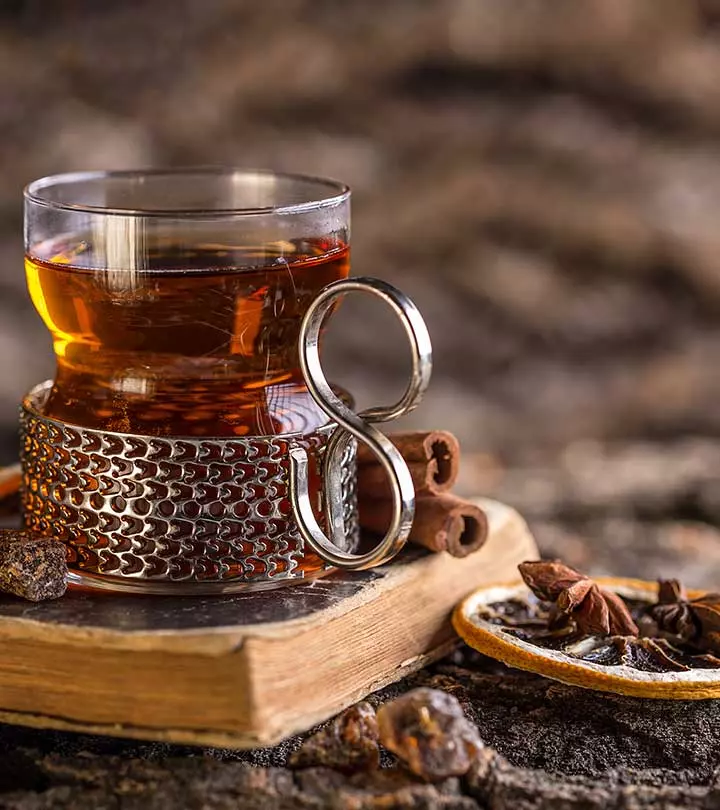
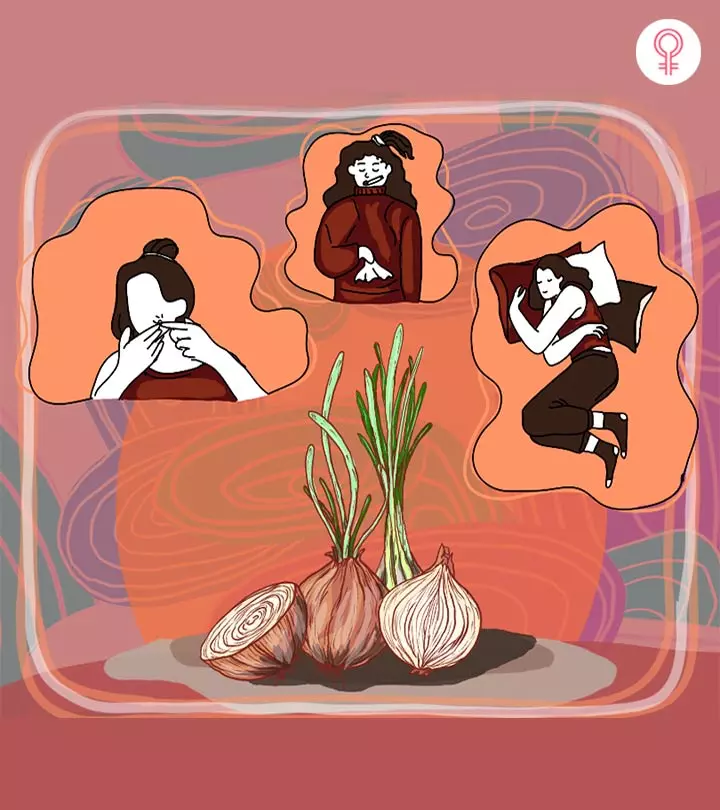



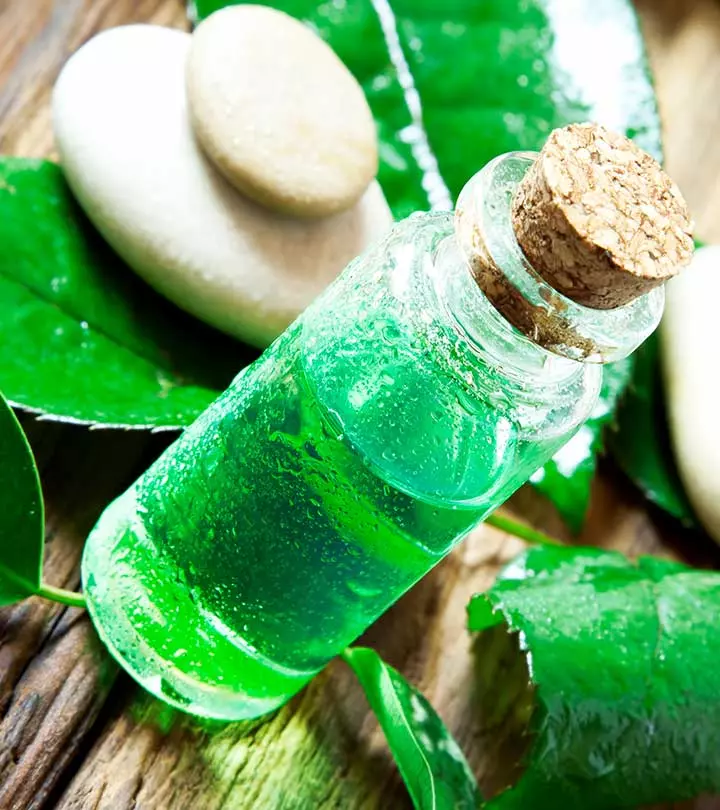



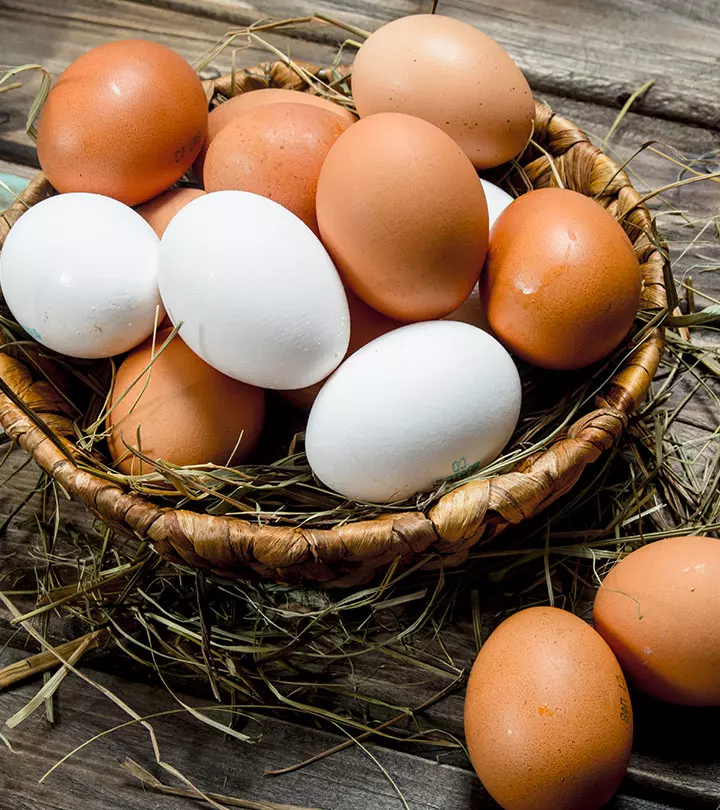




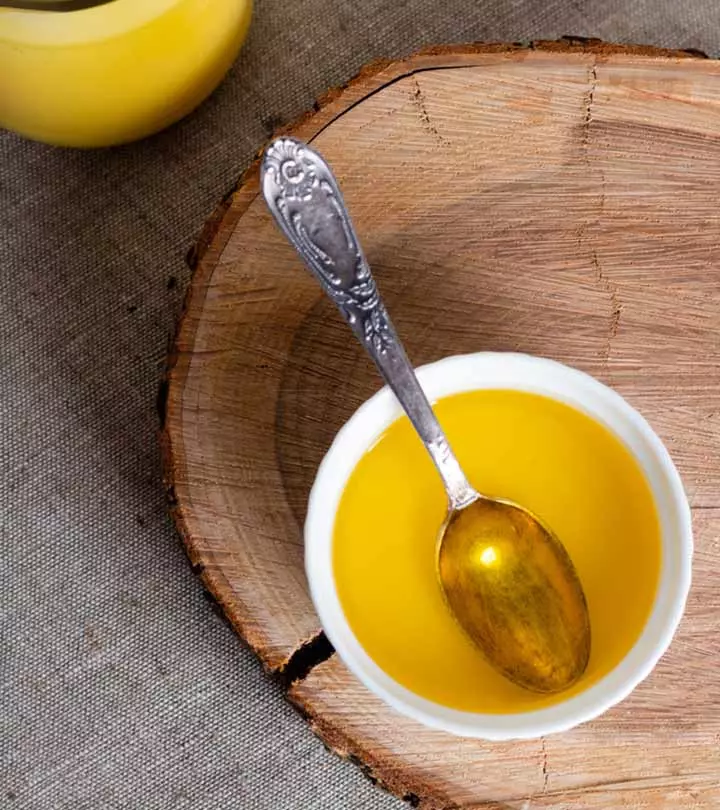






Community Experiences
Join the conversation and become a part of our empowering community! Share your stories, experiences, and insights to connect with other beauty, lifestyle, and health enthusiasts.